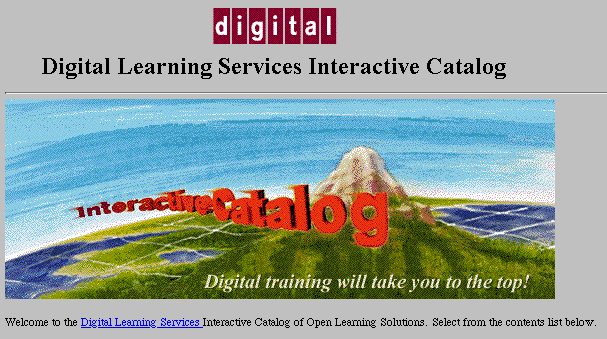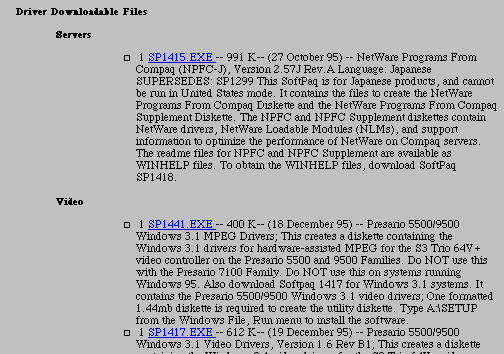
Figure 7-1: The Internet Shopping Network's opening page
MBONE: Multicasting Tomorrow's Internet
New technologies may soon provide individuals with T-1 speeds without the expense of an actual T-1 line. One promising technology, ADSL (asymmetrical digital subscriber line) may be capable of providing home Internet access over existing copper lines at a whopping 1.544 megabits per second, and possibly at rates as fast at 6 megabits per second. ADSL technology is decidedly one-sided, however: it enables you to quickly receive information from the Internet, but sending information from your computer to the Internet is still a relatively slow process -- about 16 kilobits per second. For some multimedia applications (provided that you don't want to send live video from your computer), this rate is an acceptable one. ADSL may be available in certain (lucky!) cities at early as the fourth quarter of 1995. It remains to be seen when -- or if -- the technology will be available to the rest of us at any time soon.
Business activity on the MBONE can generally be divided into three major categories -- collaboration, sales, and service.
Consider what happens during a business meeting (if you've never attended one, stop reading, fall to your knees, and give thanks to whomever you like to thank for life's blessings). Typically, the participants sit around a table, the meeting leader (typically a manager or executive) runs through the agenda point-by-point, and everyone adds their comments as the occasion insists and as protocol allows. Items are resolved, assignments are given, and new meetings are set. The meeting consists of give-and-take, all for the sake of reaching specific goals.
The problem that large businesses have with meetings is these meetings frequently cover essentially the same topic; they just occur at various locations around the country (or even around the world). More frequently, meetings demand the participation of knowledgeable employees who work in geographically separated areas. To bring all these people together requires either a videoconferencing setup, which can be extremely expensive, or more commonly, extensive travel.
Here's where the MBONE enters. For videoconferencing, the expense is still there, because T-1 lines don't come cheap (they cost more than $1000 per month, not including setup), and a well-stocked Sun workstation (another expensive piece of equipment) is the recommended computer for receiving MBONE multicasts. Then you have to factor in the cost of image projection, because expecting a room full of employees to watch a small window on a small monitor seems a bit counterproductive.
Multicasting's benefit over videoconferencing is two-fold. First, once you have the lines and equipment in place, you can hold MBONE videoconferences whenever you want without making special arrangements. Second, you can use the T-1 line to hook up the company's local area network to the Internet for a fast, 24-hour connection (although a busy network will impair MBONE reception). In other words, because many companies are already hooking up T-1 lines to obtain Internet capabilities, extending the connection to include MBONE capabilities really isn't that expensive, and the convenience you get from having MBONE capabilities is high.
With the connections and equipment in place, all kinds of opportunities open up. National or international sales meetings, once semi-yearly or even yearly events involving large travel and accommodation costs, now become possible monthly, weekly, or even daily if that serves a purpose. Demonstrations of new products or services to geographically separated sales and service personnel also becomes easier, with instant feedback possible and the resultant elimination of misunderstanding and misinformation. You can conduct employee training without worrying about location, and existing seminars can be multicast from the seminar site to employees around the world. You can also use MBONE to multicast talks by expert speakers, an equally important area of corporate education.
The caveat is that this kind of activity on the MBONE requires careful scheduling because the MBONE can handle only a limited number of sessions at a time. But time has a tendency to work around limitations in technology and eventually eliminate them, and the MBONE's capabilities are continually being improved.
First, the MBONE will enable regional sales people to invite customers to product demonstrations and unveilings that they conduct from a remote site. Obviously, this application has institutional purchasing in mind rather than single-item consumer sales, but for many firms, that area of sales is the sole or primary mode of their business. Consider an automobile company launching a new utility van designed for use in transportation fleets: a good MBONE multicast, complete with a question and answer period involving sales, service, and technical staff, would make a far bigger impression on potential buyers than another batch of brochures delivered by a single salesperson.
Consider also the electronics firm attempting to introduce a new portable CD player (quite a crowded market) for sales in a large department chain. Why not unveil it early via an MBONE broadcast, offering a comprehensive look at its features and benefits, as an adjunct to standard sales measures? Finally, consider a pharmaceutical firm about to introduce a new migraine medication: all the product brochures in the world couldn't possibly deliver as strong an impression as an MBONE multicast with video demonstrations, relevant charts and graphs, participation from researchers, and full question-and-answer session with the audience.
Several forward-thinking companies have already experimented with Internet-based press conferences and online product announcements. Some companies have held "live" events on the World Wide Web, whereas others have used proprietary collaboration software to introduce their products. But these events lack the luster -- and the audience -- that most product managers want when they display their wares.
The MBONE also has the capability of becoming an important consumer sales technology. Assuming that we'll all have ISDN or ADSL connections one day for high-speed online access, the possibility of an interactive home shopping network becomes very real. If you've spent any time watching your home shopping station, you've probably realized that the current product lines are minimal and the interaction possible with it weak. To find a product worth buying, you have to wade through seemingly endless descriptions of ugly jewelry and portraits of sports heroes you've barely heard of, and then you have to pick up the phone to order whatever you want, largely on trust.
Now compare shopping via TV to the sales experience you get at the retail mall, which is more personal and varied, but also more tiring; and the mail-order catalog, which frequently provides you with extensive choices but is easy to ignore or dispose of. The MBONE could combine the best traits of these experiences to create the ultimate shopping forum, complete with personal interaction, ease of ordering, and extensive product selection.
The Internet has already taken huge strides in that direction in recent years. Hundreds of Internet "malls" have popped up -- everyone with a Web server and an Internet connection is trying to make an extra buck hawking their (or someone else's) products on the Internet. Of course, opinions vary vastly on whether those online shopping experiences are worthwhile, or even profitable.
It's unlikely that you'll see a 24-hour MBONE link to a remote retail store any time soon, but what is possible is that a retail outlet, especially one with a niche clientele, could offer MBONE-based sales once a week by setting up a multicast and announcing it -- via the Internet and other marketing channels -- to whomever is interested. Such events would enable the store to show their goods in detail to interested customers, who could then ask questions, watch or hear demonstrations, and engage in discussions with one another about the products. You won't have much difficulty thinking of several potential sales and marketing applications of this kind, and as long as you give full play to both the multimedia and interactive aspects of the technology, the cost will easily justify itself.
This type of sales experience should have a strong effect in real estate sales and rentals. If you've ever had to move from one city to another, you know the enormous commitment of time and energy it takes to search for a new home. Even a move within your own city can be time-consuming and frustrating. But consider the home-shopping opportunities available via the MBONE. You can fire up your Internet connection and Web browser and head for the real estate pages that list houses for sale or rent in your new city. You could choose one you like, then fill in a form and send off a request for an MBONE "visit." The real estate firm would then contact you (maybe even by real voice phone), and agree to a time and date for the session. At the appointed time, you log in again, load your MBONE client software, and a sales agent greets you from the destination city, standing in front of the house. You're given a video and audio walkthrough of the house and the grounds, and the agent answers all your questions. If you want, you may even be able to meet with a local financing officer at the same time. Then, when you've narrowed down four or five houses you're really interested in, you hop a plane and do a non-virtual visit, just to make sure that the floors actually exist.
You should realize that this kind of interactive, online sales experience is not yet available. Figure 7-1 shows the home page of one of the Web's most talked-about sales sites, the Internet Shopping Network. The ISN is enjoyable to shop and offers some significant deals at times, but it hardly provides a rich interactive experience. No one is there to answer your questions about the purchases you're making (product reviews are sometimes available, but that's about it), no product demonstrations are available, and you do not even have the opportunity to touch the goods. Admittedly, an MBONE multicast may not be feasible for selling hard drives, but for other goods, interactive multimedia presentations could certainly help.

Figure 7-1: The Internet Shopping Network's opening page
Yet another example of Web-based sales can be seen in Figure 7-2. Noteworthy Music, whose home page resides at http://www.netmarket.com/noteworthy/bin/main, offers an extensive collection of music CDs for sale. This site is great if you're looking for older CDs or specific songs because you can search CDs according to various parameters. Noteworthy Music has a much wider selection than most music stores, offers good prices, and the site keeps track of the total amount of money you're spending for you. But while the site offers multimedia in the form of several album covers (Figure 7-2 is an example), it offers very little audio or video multimedia. Well-developed MBONE sales sessions could dramatically improve both interaction and sales capability, because customers could hear selections, talk to sales staff, and even hear live mini-concerts that Noteworthy could set up (every Thursday evening, for example). Until now, those capabilities haven't really existed, but with the MBONE, they suddenly do.

Figure 7-2: Noteworthy Music features the album covers of several popular releases
That said, however, service matters a great deal to other companies because it matters to their customers. Already we see companies using the World Wide Web as a service tool, and although this practice is currently limited primarily to computer firms, the potential of using the Web to provide service exists for other firms as well. Figure 7-3 shows Digital's interactive catalog of Learning Services (http://www.digital.com/.i/digest/htdocs/digest/home.html), which includes prices, schedules, and descriptions of courses designed for Digital's customers. Elsewhere in DEC's site, you'll find software patches, technical documentation, and other useful service items, making this site one of the best service sites on the Internet.

Figure 7-3: The main page from Digital Equipment's Learning Services Interactive Catalog.
Another great service site is the Web site for Compaq Computer (http://www.compaq.com), whose downloadable files area of their Service and Support section is shown in Figure 7-4. Owners of Compaq computers will go here rather than to phone technical support to get their upgrade files, and as a result, this site provides a good service site for Compaq's customers.

Figure 7-4: Downloadable files from Compaq Computer's Web site.
Bell Canada provides yet another type of service on the Web. The site at http://www.bell.ca offers a do-it-yourself guide to installing telephone wire inside your house. The reason? Early in 1996, Bell will no longer be responsible for this installation (for single-line residences only), so they offer this service as a means of helping with the transition.
These service sites each provide a definite degree of usefulness to consumers of their related products. But consider how much that usefulness would increase if customers were offered the same benefits via a high-speed MBONE session. A scheduled session would enable technicians to answer questions for a number of users simultaneously (an advanced version of the Frequently Asked Questions idea) and could demonstrate to users how to perform upgrades, installations, and so on. Other representatives could schedule times to explain, demonstrate, and answer questions about add-ons, upgrades, and other important, product-related issues, using audio and expanded video information as well as text.
The secrets to successful customer service are speed, reliability, knowledgeability, and -- if you will -- humanity. Telephone hotlines can be fast, but they're often unreliable (busy), and technical help representative often find it impossible to diagnose a problem over the phone. Web sites and other online services (BBSs, CompuServe or AOL, and so on) are useful tools to turn to if you know what you're looking for, but the contact they provide is anything but "human." The MBONE will enable these qualities to come together (as long as companies structure these sessions wisely), and the result will be increased customer satisfaction at a reasonable cost.